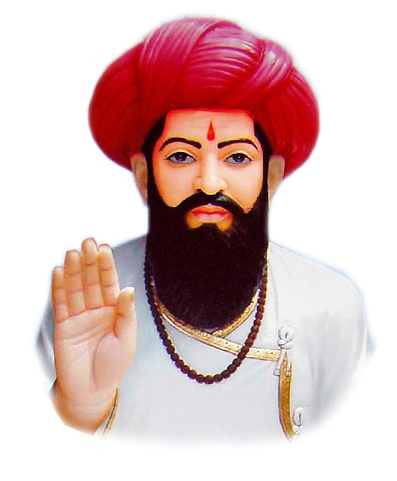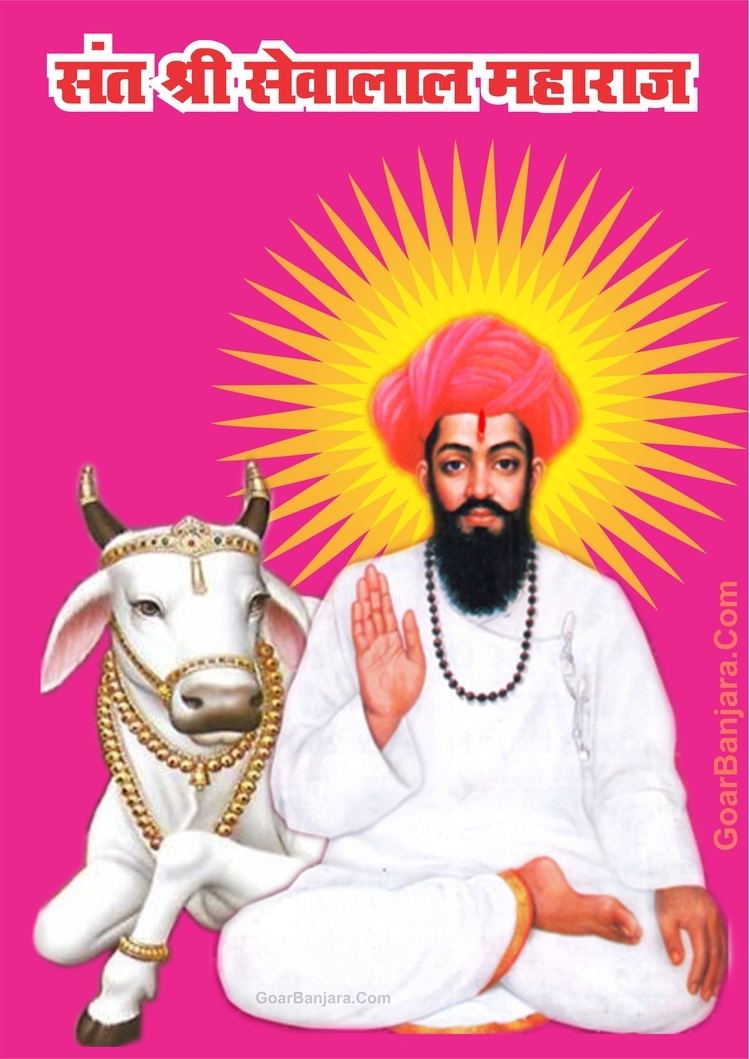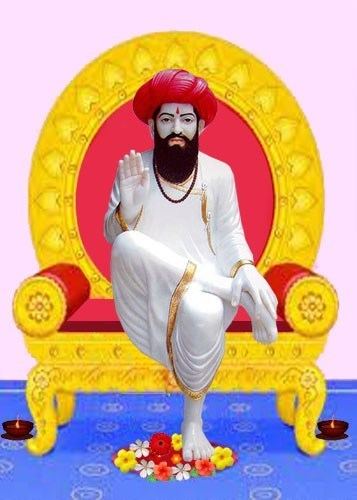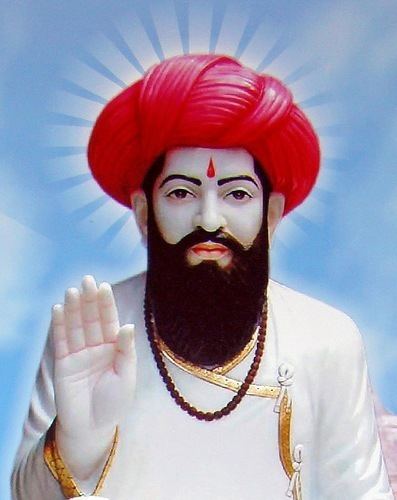Parents Dharmani Yaadi, Bhima Naik Similar Gopalanand Swami, Sant Charandas, Garib Das | ||

Sevalal Maharaj (born 15 February 1739) was an Indian spiritual leader revered by the Banjaras. He is referred to as "Sant Sevalal Maharaj" and "Satguru Sevalal Maharaj" by his followers.
Contents
- Facts
- Historical background and Banjaras
- T government decided to grandly celebrate sevalal maharaj birth anniversary 15 02 2015
- References

Sevalal was born to Dharmani Yaadi (mother) and Bhima Naik in 1739. At that time, his birthplace was known as Ramagundam or Ramji Naik Tanda (after his grandfather Ramji Naik, who settled it with 360 families of his clan). Ramji Naik Tanda was deserted by the end of 18th century, and a new village known as Chennarayanipally was established by its former residents. This settlement now falls in the revenue village of Golaldoddi. It is located in the Gooty mandal of Anantapur district, Andhra Pradesh.

Facts
Historical background and Banjaras
Banjaras lived originally in Rajasthan, mainly Mewad and Chithorgad areas. They were the followers of Prithviraj Chavan. After Prithviraj Chavan banjaras followed Rana Prathap of Chithorgad. They were supplying provisions and arms to the armies of these historical leaders. Some were in the army and fought for them. After the defeat of Rana Prathap, they became refugees and followed him to the forests and later migrated through Malwa to other places of India.

They were supplying arms and provisions to the Mughal rulers and later to Britishers. They used cows and bullocks for the transportation of provisions and arms and were leading nomadic tribal lives. They started living in the forest areas where facilities for water and grazing their cows and bullocks were available. That is why each family possessed large herds of cows and bullocks. Among them, the group leaders (Naik) had the largest number of cows and bullocks. They migrated and settled to north, east and south. Such settlements are known as Thandas. The thanda is administered as follows: The head of the thanda is called as Nayak. Usually a Rathod (Ramavath,khola, Karamathot or bannoth-bhukia) will be a Nayak of the thanda but a Pammar (Pawar) or a Chavan may also be a Nayak. The Nayak is assisted by an elderly person called Davo. He is an adviser and guide to Nayak. Third person called as Karbhari who acts as a courier of instruction of Nayak. Any decisions pertaining to festivals, functions, marriages are decided by Nayak. Davo and Karbhari. This decision will be conveyed to people of thanda by Karbhari. He acts as a messenger. All these positions are hereditary in nature and run in the same family from generation to generation. A thanda is named usually after the name of the Nayak (example: Rama Naikero thando or Rama Naik’s thanda) or if it is situated near a forest, then it is known as jhadivalo thando. (Jhadi means forest) or it will be named after the name of a revenue village, Alur thanda. When there is a quarrel, dowry and marriage problems and land dispute the panchayath will be called. The Karbhari will announce and assemble the people of the thanda. Both parties will be heard and spot decisions will be taken. Some time, it may take 2-3 days. Once decision is taken it is binding on both parties Rarely they take the help of police or courts. Among the groups moved towards the north, one group led by Lakhisa banjara was the prominent. It is said that he was possessing one lakh cows and bullocks. He was the richest person among the banjaras. He was supplying provisions and arms to the sikhs who were fighting the Mughals Lakhisa banjara and his group were supporting the sikhs. Many banjaras joined their army.

There used to be frequent battles between the armies of Sikhs led by their gurus and Mughals This group was staying near the capital of India (Delhi). It is stated that in one of the fiercest battles, the Sikh army was defeated and their guru Tej Bahadur was seriously wounded. The Sikh guru took shelter in the hut of Lakhisa Banjara. He died due to profuse bleeding. The soldiers of Mughul army were searching his body. Lakhisa Banjara fearing that soldiers might find the body and punish them in revenge and also in order to avoid the capture, hung the body in public place to instill fear among the others as it was the custom those days, set fire to his own hut and thus avoided the capture and humliation of the body of Sikh guru. Hence Lakhisa Banjara is respected by sikhs and banjaras alike. His name is mentioned in their scripts and in their Guru Granth Saheb.

Among the groups migrated towards south, Ramji Naik and his group was the largest Ramji Naik and his group came and settled at a location known as Ramagundam or Ramji Naik’s Thanda near Gollaiadoddi with 360 families and 3755 catties. In addition they had horses, sheep and goats.

T government decided to grandly celebrate sevalal maharaj birth anniversary 15 02 2015

